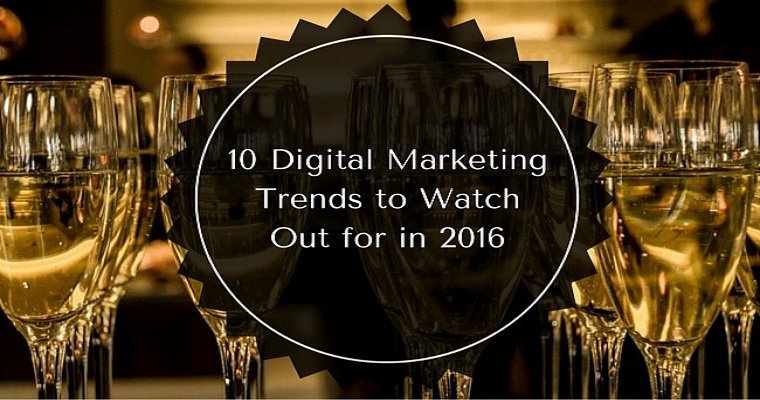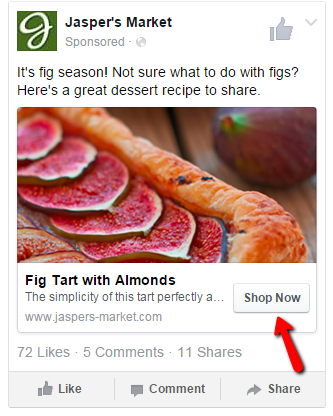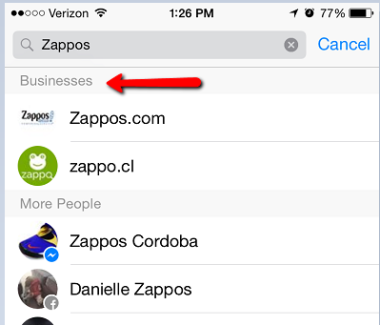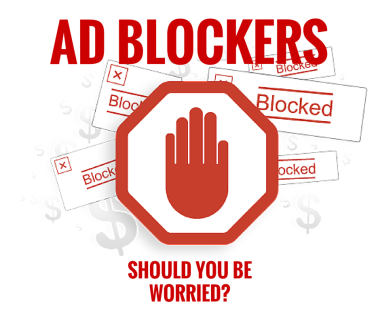The year 2016 is upon us, which means sparkly clothing, champagne flutes, and a long list of soon-to-be-broken resolutions. Aside from all of your cliché New Year’s Eve traditions, many marketers are starting to forecast what’s to come in the world of digital.
So, as you tuck your ornaments away and toss the remainder of those cookies that are getting in the way of your waistline goals, check out this list of digital marketing trends that are on the up and up in 2016. The best way to beat your competition this year is to stay ahead of the digital curve, and this list will help you do just that.
#1: Social Ads
Online advertising has been rapidly on the rise this year, and in 2017 digital ad spend is predicated to finally surpass TV! According to Interpublic Group’s Magna Global, in 2015 digital ad spend will have grown 17.2% (to $160 billion), and 13.5% in 2016, surpassing TV as the biggest advertising platform in 2017.
With a big chunk of this digital spend being allocated to social advertising, this is a trend marketers cannot ignore in 2016. For instance, eMarketer predicts social network ad spending will reach $35.98 billion in 2017, which will make up 16% of all global digital ad spend.
So how should marketers’ best leverage social to gain traction on their competitors?
- Start by deciding which platforms are worth investing in for your audience. Are you selling beautifully crafted handmade blankets? Then visual platforms like Instagram and Pinterest may be the way to go. Are you in the B2B space? Facebook’s sophisticated targeting options could be a good option to hone in on your target audience.
- Test your posts organically and promote the winners. Don’t just randomly allocated budgets to blog posts that your teammate authored. Instead, promote the organic winners to up the performance even more.
- Utilize action-oriented ad formats. Think Twitter Lead Generation ads and Facebook Click to Website ads with call-to-action buttons. Encouraging people to do something instead of just promoting your social account will be a better use of your ad spend.
#2: Facebook Messenger for Business
In March of 2015, Facebook revealed Messenger for Business, taking the widely used messenger system that you and I utilize to communicate with our friends, spouses, and family members, and making it available for B2C and even B2B conversations.
With Facebook messenger’s user base topping over 700 million people each month, and experiencing 40% growth from 2014 to 2015 (according to Luxury Daily) it’s becoming clear that Messenger’s availability to businesses could have a significant impact.
Aside from the opportunity to provide personalized customer service interactions, marketers can leverage this new channel in a similar manner to email marketing. For instance, say you’re running a limited-time discount, you’ll be allowed to message in-market customers about specific promotions to encourage them to shop. You can also send push notifications and keep consumers updated on their order status with detailed messages.
Just last week Facebook announced businesses can also install a Facebook messenger box on their websites to utilize it in a similar manner as a website live chat box.
Facebook is clearly invested in the success of this platform, and with such widespread popularity businesses should be invested in it as well. In 2016, this tool will become more important in delivering the right messages to the right people at the right times.
#3: Podcasts
When I told my boss about this one, he rolled his eyes. Podcasts? Really? I was skeptical at first as well, until I started to think about how often I listen to NPR and This American Life on my walk or bus ride to work. Not to mention last fall when I (along with millions of other Americans) spent every spare moment listening to “Serial” the podcast series covering the 1999 murder of a young high school student.
Approximately 46 million Americans listen to podcasts monthly, and the average listener listens to six a week, according to Edison. Clearly, podcasts are on the rise, but how can marketers leverage these in 2016?
One way is to pay to play with ads. Starting your own podcast series might seem overwhelming, and rightfully so, but companies like Squarespace and Casper have leveraged ad space during breaks in programming on the most popular podcast programs like TED Radio Hour and “Wait Wait…Don’t Tell Me.”
Larger brands like GE and Netflix have recently launched their own podcast productions, and people are actually listening! Umpqua Bank launched a podcast series with MTV correspondent SuChin Pak that provides financial guidance, and the first three episodes have been downloaded over 70,000 times – pretty impressive!
“Creating podcasts takes more work for small-business owners, but experts say they can be a powerful way to build customer loyalty,” says Dennis Nishi in the Wall Street Journal.
#4: Native Advertising
Ad blockers are the modern-day marketer’s worst online nightmare. Although ad blockers, which prevent ads from being shown on websites, are not “new,” they’ve been all over the headlines ever since Apple revealed the mobile operating systems powering iPhones and iPads, iOS 9, would now support these sneaky little ad killers.
Why the big fuss? Well, online advertising fuels the majority of websites across the Internet.
“Advertising represents $350 billion of the U.S. gross national product, and consumers depend on it to help make $9 trillion of annual spending decisions,” reports AdvertisingAge. “Some websites, particularly those with millennial audiences, are already losing up to 40% of their ad revenue because of ad blocking.”
Whether or not ad blockers will affect you in 2016, the numbers show that it’s worth putting in place preventative measures to ensure your advertising goals are not ripped to shreds. This is where native advertising comes into play.
Since native ads look, read, and feel like non-promotional content, ad blocking technology does not prevent them from displaying. Native ads have already been trending, but with more ad blocking panic setting in, these babies should become an essential part of your digital marketing strategy in 2016.
#5: Personalized PPC
One-third of marketers see personalization as the most important capability to the future of marketing, according to an Adobe study. We also just happen to live a world where the Internet knows more about you then the coworker sitting two feet away from you.
For the last several years, paid search has been all about targeting the right set of keywords to find people who may or may not be in-market for your products or solutions, but this strategy has a lot of flaws. From generating irrelevant clicks and site visits, PPC can become quite expensive if your keyword strategy isn’t flawless. Even if you’re targeting the most relevant set of keywords, your volume might be so low that you’re not reaching nearly enough searchers to generate new business.
If Google knows so much about each and every searcher, why is it so hard for advertisers to find the right audience? For one, Google prides itself on protecting searcher information, but it also knows what advertisers want, which is why Google introduced Customer Match in September 2015. Customer Match allows you to upload a list of contacts you already have and target them through search. This feature is also available on Facebook and Twitter, and is essentially making search and social become more like email marketing by serving ads to people who are within a certain stage of your purchase funnel.
For instance, let’s say you captured a list of emails from a recent webinar on healthcare software. You can then target these people on Google, Twitter, or Facebook with relevant offers. In 2016, PPC will likely become more and more personal, which is why marketers must start utilizing these new features, like Customer Match, to connect with their prospects and customers at the right time with messages catered to them.
#6: Marketing Automation
Marketing automation is nothing new. As a $5.5 billion industry, marketers have clearly come to understand the importance of utilizing automation to save time and improve productivity. Here at WordStream, we’d need to double the size of our team if we didn’t have automation in place. From scheduling emails, segmenting contacts, automating social media, and managing content, automation has allowed us to grow, reach, and exceed our goals quarter after quarter.
So why is this a trend for 2016? Many companies still fall short of implementing a robust marketing automation system that actually works. 2016 is the year when marketers need to dive in, identify gaps in their sales and marketing funnels, and form an automation strategy to make their jobs easier and their goals more attainable.
#7: Videos
A few nights ago I spent a good two hours watching 30 second videos of speed recipes on Instagram. Now, whenever I scroll through any of my social feeds, I’m bound to watch one, two, three or more videos, with or without sound. I notice companies of all sizes utilizing video, from the small mom-and-pop shop in South Dakota to companies in the tech space like Moz and Unbounce to huge brands like Hallmark, video marketing is hot, hot, hot!
A huge chunk of ad spend is also being allocated to video. Yahoo even took it to a whole other level when they recently tested a full-screen sized auto-play video ad, which engulfed the entire search engines results page!
Videos help businesses entertain and engage their audiences through visuals, colors, sounds and/or music. More importantly, videos often humanize a faceless business, in turn building brand loyalty and trust. What could be more intriguing and unforgettable then a remarkable video? According to a study by the Web Video Marketing Council, 96% of B2B marketers are using video in their content strategy.
“Marketers have learned that video is good for more than attracting attention,” says Tyler Lessard, CMO of Vidyard. “It enriched the customer journey at all stages, and it is more effective than other content at converting buyers.”
In 2016, marketers should watch out for an explosion in video marketing and analytics. If marketers aren’t already producing and tracking video performance, the time is now!
#8: Mobile (again)
It’s the year of mobile! Wait, wasn’t 2015 the year of mobile? And 2014, 2013, and 2012 for that matter? Yup, we’re all sick of hearing that phrase uttered – we get it already. But, to be fair, 2015 really did prove that mobile is exploding, from Google’s announcement that mobile has surpassed desktop to “Mobilegeddon,” the algorithm change that forced SEOs to optimize their sites for mobile at lightning-fast pace.
Our iPhones have become an additional limb. I recently left mine for 10 minutes in the seat of an airplane and it felt like I’d lost my best friend. So, what does this mean for marketers in 2016? Mobile will remain on the forefront and only continue to trump desktop, so marketers will be need to continue building out robust mobile marketing strategies.
#9: Wearables
Technology wrapped around your wrist and in your hoodie? Is that really necessary? Indeed it is. As devices continue to rule our world, wearable technology is predicted to see an adoption rate of 28% in 2016, according to HubSpot.
What does this mean for marketers? More data on every move your target buyer is making. The internet of things will continue to become more and more important to marketers in 2016.
#10: Buy Buttons
E-commerce and retail marketers listen up! Buy buttons have slowly been appearing on social sites like Pinterest and Twitter. In July, Google also confirmed its testing its own buy button. The ability to buy directly from a social site or search engine is going to explode in 2016, and e-commerce marketers need to keep up! While some don’t like the idea due to a loss of branding and fear that Google and social sites are attempting to become a retailers themselves, the buy button is upon us and serves as another means of increasing conversions, specifically those on mobile.
“While mobile commerce grew more than three times as quickly as commerce on desktop websites in the first quarter, the percentage of people who go on to buy something after clicking an ad is lower on phones than on desktops,” says Re/code’s Joshua Del Ray. “But if you let someone buy a product directly from the ad on Twitter, Facebook, Pinterest or Google – through, say, a Buy button – the thinking is that conversion rate will improve. And when conversion rates improve, advertisers buy more ads.”
Whether you like it or not, the buy button will continue to grow in popularity in 2016 so marketers must adapt.
These top ten trends are just scratching the surface of what’s to come in 2016, but one thing is for certain — the digital space will continue to grow, innovate, and amaze our marketing minds.
Image Credits
Features Image: Image by Margot da Cunha
In-post Photo: Image by Margot da Cunha
All screenshots by Margot da Cunha. Taken December 2015.









